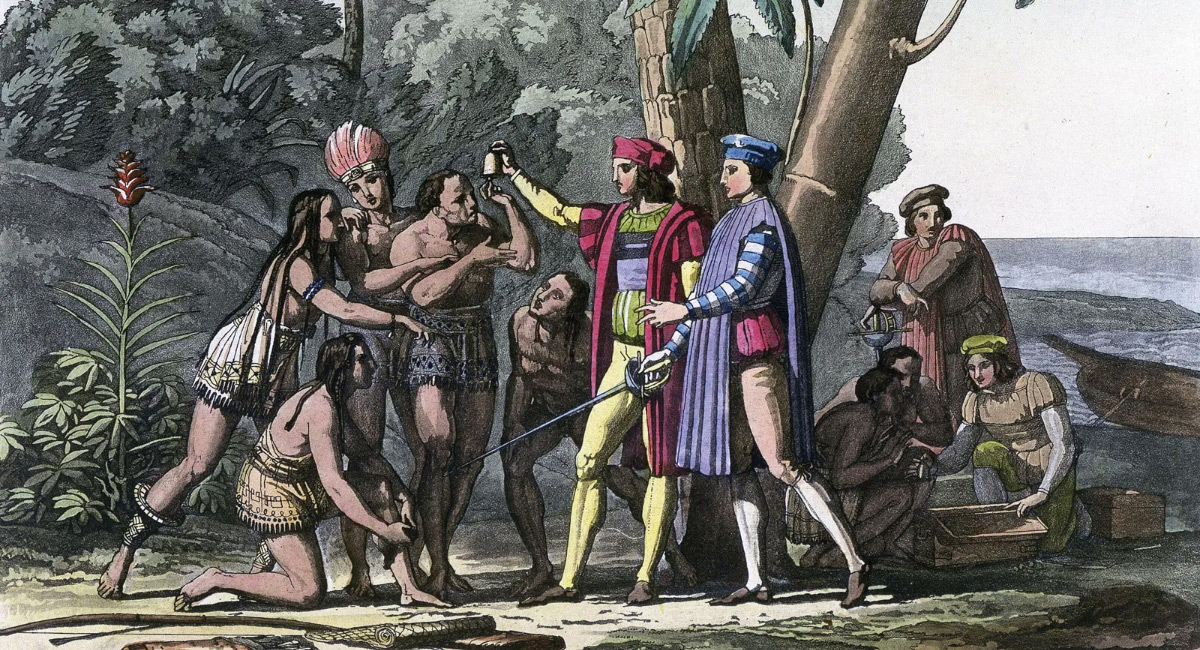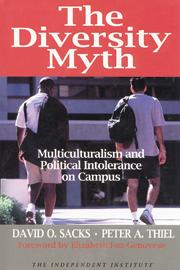Today is Columbus Day—or the anti-Columbus “Indigenous People’s Day,” if you happen to be on a college campus. What better time to remind ourselves that, all too often, “multiculturalism” really means antipathy for the West? Consider Stanford’s new core curriculum, a model for schools across the country:
- In “Cultures, Ideas, and Values” (CIV), the freshman requirement that replaced Western Culture, students compare the U.S. Bill of Rights with Lee Iacocca’s Car Buyer Bill of Rights. Plato and Aristotle are still read, but mainly to contrast their “logocentrism” with the more holistic approach of Chief Seattle. Students read not only Shakespeare’s “The Tempest,” but “A Tempest,” written by 1960s radical Aime Cesaire, who tells the story from a “slave perspective.” These motifs have been ahistorically combined in an end-of-the-quarter skit in which students dress in Roman togas and depict European imperialism in the New World.
- Freshman English, another mandatory course, has been made “multicultural” by requiring enrolled students to fill out grant requests for their professors; favorite community service agencies. Options include homeless advocacy projects, AIDS support groups, and environmental action leagues.
- While there is no graduation requirement in American history, students must now take courses in race theory and feminist studies. In Feminist Studies 1010, assignments have included writing (but not necessarily sending) a letter to parents “coming out as a lesbian.” And in “The Psychology of Gender,” which meets one of the new requirements, the hunt for sexism took students to a local pizzeria, where they monitored “gender discrepancies in pizza consumption.”
- Even more traditional-sounding classes may not come as advertised. “Religions in America,” a 1993–94 class that counted toward three graduation requirements, examined Shamanism, the Peyote Cult and the Kodiak sect, but not the Catholic Church. Anthropology 1, a class also meeting three requirements, devoted lectures to “language imperialism” and blamed CNN for broadcasting English to the entire world. And “The History of Rights in the United States was so busy extolling 1960s protest movements that the class never got around to studying the Declaration of Independence or the Constitution.
The new canon delivers everything but the one educationally justifiable thing it promised—the serious study of other cultures. Without noticing the irony, Stanford has slashed its foreign language departments and closed several overseas campuses in recent years. Almost all the multicultural texts were written in English, by Westerners, since the 1960s. Cesaire, CIV’s Third World take on Shakespeare, actually was a Western intellectual who served as a representative in the French Assembly and mayor of Fort-de-France, Martinique (positions not usually occupied by the disempowered). And his supposed non-Western classic remains fixated on the West in an effort to expose racism, sexism, imperialism, and even the sin of environmental pollution.
“A Tempest” is, however, highly illustrative of what now passes for great literature. The play’s characters derive from Shakespeare (with the addition of a “black devil-god.”) But Prospero, instead of being a wizened wizard, is depicted as a megalomaniac (“I am Power,” he rants). And the slave Caliban is transformed from a savage monster into a revolutionary hero whose leitmotif is “Uhuru!”—a Swahili yell announcing his entrance on stage. He also prefers to be called “X,” reminding us that this commentary is on American race relations, not African culture.
Echoing themes that will be heard at Columbus Day protests across the country, the play concludes with an angry tirade against “those guys who founded the colonies and who now can’t live anywhere else.” Caliban speaks for Cesaire when he tells these “colonial addicts” to “go back to Europe”—not a bad summary of what multiculturalism has become.
Of course, most students don’t take all of this at face value. Many suspect that the West is not uniquely baneful, and realize that individual rights were not celebrated by cultures that bound women’s feet, sold their own people into slavery, routinely performed clitorectomies, or enforced rigid caste systems. Nevertheless, as recycled anti-Western banalities substitute for a genuine study of Western and non-Western cultures, multiculturalism effectively is wasting some of the best years of America’s brightest students. In this regard, the new curriculum exacts a steep price from liberals and conservatives, believers and heretics alike.
The major danger is not that today’s students will become left-wing acolytes of multiculturalism—the movement is too mindless for that—but that many students’ rejection of multiculturalism will become a rejection of learning itself. Until students are fed more than Indigenous Peoples’ Day, the intellectual equivalent of junk food, this generation will rightfully feel betrayed by its elders.









